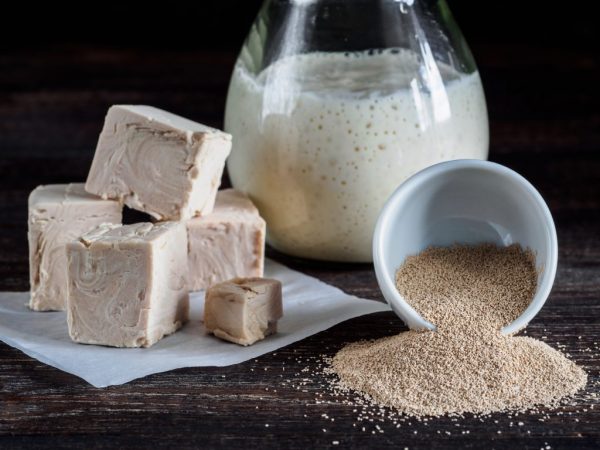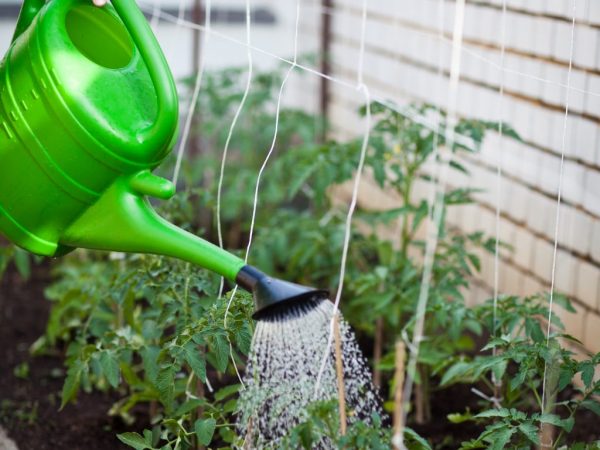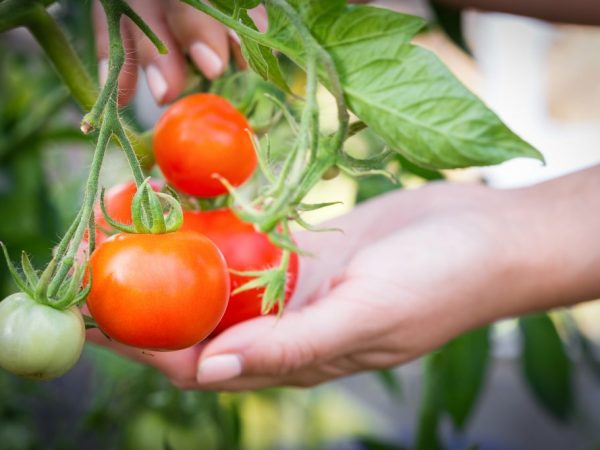How to make tomato and cucumber yeast feed
Fertilizing tomatoes and cucumbers with yeast feeding has become a common method for many gardeners. This type of fertilizer is actively used by gardeners engaged in organic farming. You can find yeast for feeding tomatoes and cucumbers in almost any store. Their main advantage is that they do not have such a negative effect on plants as chemicals do. Many specialized stores selling agricultural products often sell fertilizing with toxic substances.

Yeast feed for tomatoes and cucumbers
Along with useful substances and minerals, the composition of such products will contain a number of substances completely opposite to them. When growing food for home use, hardly anyone will want to consume vegetables grown with the use of chemicals. For themselves and their loved ones, everyone wants to grow only healthy and environmentally friendly products. With these goals in mind, supplements based on yeast that do not contain harmful substances have appeared. Yeast is replaced by chemical additives that stimulate rapid growth.
The use of yeast dates back to ancient times. At a time when there were no stores selling chemical additives yet. With their appearance, the need to use traditional top dressing disappeared, since chemistry gave a much stronger effect. Today, modern gardeners prefer to grow vegetables using organic fertilizers. Best of all, yeast feeding is perceived by tomatoes, cucumbers and peppers.
Yeast types
Many people prepare fertilizer from yeast for tomatoes and cucumbers on their own, since it is easy and time consuming to do so. For the preparation of organic fertilizer, you can use different types of yeast.
There are several types of yeast:
- fast-acting;
- fresh;
- dry;
- granular;
- pressed.
In the absence of ready-made yeast, a nutrient of a similar effect is made in liquid form. As ingredients for the solution, you can use crackers, bread or other finished products based on flour. To enhance the effect, plant components in the form of a tincture are used as an additive to yeast. To do this, use weeds, tops from vegetables (for example, from potatoes) or the foliage of a tree.
Pros and cons of yeast feeding

It is enough to feed the plants three times per season.
There are many options for fertilizing the most common vegetables: peppers, tomatoes and cucumbers. The main thing is not to overdo it, as an oversupply of fertilizer harms the plantings. There is no need to feed seedlings more than three times a season.
The use of fertilizer stimulates the plant to more active nutrition, so it begins to require more and more nutrients each time it grows. This leads to soil depletion.
Another negative aspect of using a supplement in the form of a yeast mixture is an increase in the nitrogen content of the plant. It will promote the rapid growth of the green part, while the fruits will not grow.
Common recipes for yeast feeding
- Recipe 1.3 tsp. yeast, 2 tbsp. l. granulated sugar and 10 liters of water slightly warmer than room temperature are mixed and set to infuse for 3 hours. The resulting mixture is diluted with a small amount of water (ratio 1: 5).
- Recipe 2. This recipe uses fresh yeast. Components: 100 g yeast, water. First, pour the yeast with water (0.5 l), stir until completely dissolved, add water in large quantities (optimally 5 l). The additive will be especially effective for tomatoes and flowers.
- Recipe 3. For this option, you will need fresh yeast (100 g), warm water (10 l), 0.5 kg of ash (only wood ash will be effective). The recipe is simple: you just need to mix the ingredients. It is best to apply top dressing during the most active growth of vegetables.
- Recipe 4. The most common use of this recipe is in large areas where tomatoes and cucumbers grow. The composition includes greens (about a bucket in a chopped form), 500 g of yeast (as in several previous recipes, it is better to use fresh ones), 70 liters of water. All of these components must be mixed and allowed to brew for 24 hours so that the mixture ferments. You need to use the solution at the same time as watering, so it is best to water the plantings after sunset.
Yeast top dressing with ash
Wood ash is a good nitrogen-reducing agent due to its rich mineral content. The use of ash together with yeast solution is especially effective for growing cucumbers and tomatoes, as it does not allow the greenery to grow. The richest in minerals is ash, formed as a result of burning firewood from fruit plants. The lowest content of minerals is in old withered logs.
Ash must be used correctly: dilute with warm water and mix with yeast fertilizer.
Yeast feeding with ash is really necessary for plants. After entering the soil, the yeast enriches it with useful substances such as vitamins, phytohormones and auxins.
All this contributes to an increase in the rate of division and differentiation of cells, as well as an increase in the activity of microorganisms. Carbonic acid, phosphorus and nitrogen molecules begin to actively act. Thus, the soil receives almost the full range of minerals that are so necessary for the plant.
It is most optimal to feed the soil in the spring, when it is already warm: in cold conditions, yeast will not work. If the crop is in no hurry to appear or the plant itself is sluggish, re-feeding should be carried out.
Feeding rules
For the first time, cucumbers or tomatoes are fed about 7 days after planting, the ground is enriched with nitrogen before that. Fertilizing before this period does not make sense, since the plant has not yet taken root and cannot perceive the additive.
When re-applying, the soil is enriched with phosphorus, and top dressing is applied before flowering in order to increase the ovaries. In this case, the recipe used the second time should not differ from the first, only the volume is changed. If about 0.5 liters of fertilizers are used for the first time, the second time the amount increases by 4 times. A warm day is chosen for feeding.
The plant can be fed a third time after the first harvest.

To get a good harvest, you should follow the recommendations
Fertilization beyond measure does not lead to anything good. This applies both to the amount of dressings and to the volume of solution applied at a time. It is recommended to use a more diluted product, as this reduces the risk of damage to the plantings due to the high concentration. A similar effect can be obtained by using brown bread crumbs. It is advisable to use them with or instead of yeast.
The most optimal feeding recipe for tomatoes and cucumbers is to mix 10 g of yeast with 500 g of ash and 500 g of droppings, add 10 liters of water and 5 tbsp. l. granulated sugar. This mixture should be used, diluting in a ratio of 1:10, pouring the mixture not under the root system or on the cucumbers, but around the plantings.
With the help of fertilizers with yeast, you can not only increase the growth rate, yield, taste, but also avoid unnecessary costs for the purchase of expensive chemical additives, as well as provide yourself and your loved ones with environmentally friendly products. The organic composition of the yeast feed will reduce health risks. The rich complex of microelements and natural chemical reactions will not only not harm the earth and nature as a whole, but will also restore the lost fertility.


